As a master of traditional ink wash painting, Zhou Jingxin is credited with inventing a distinct style of his own. He has taken home five consecutive awards at the quinquennial National Exhibition of Fine Arts, yet his style and focus from different periods varies greatly. In particular, he replaced the focus on "lines" in Chinese ink wash paintings with large blocks of ink, and invented a style of painting he calls "ink sculpture."
15:18
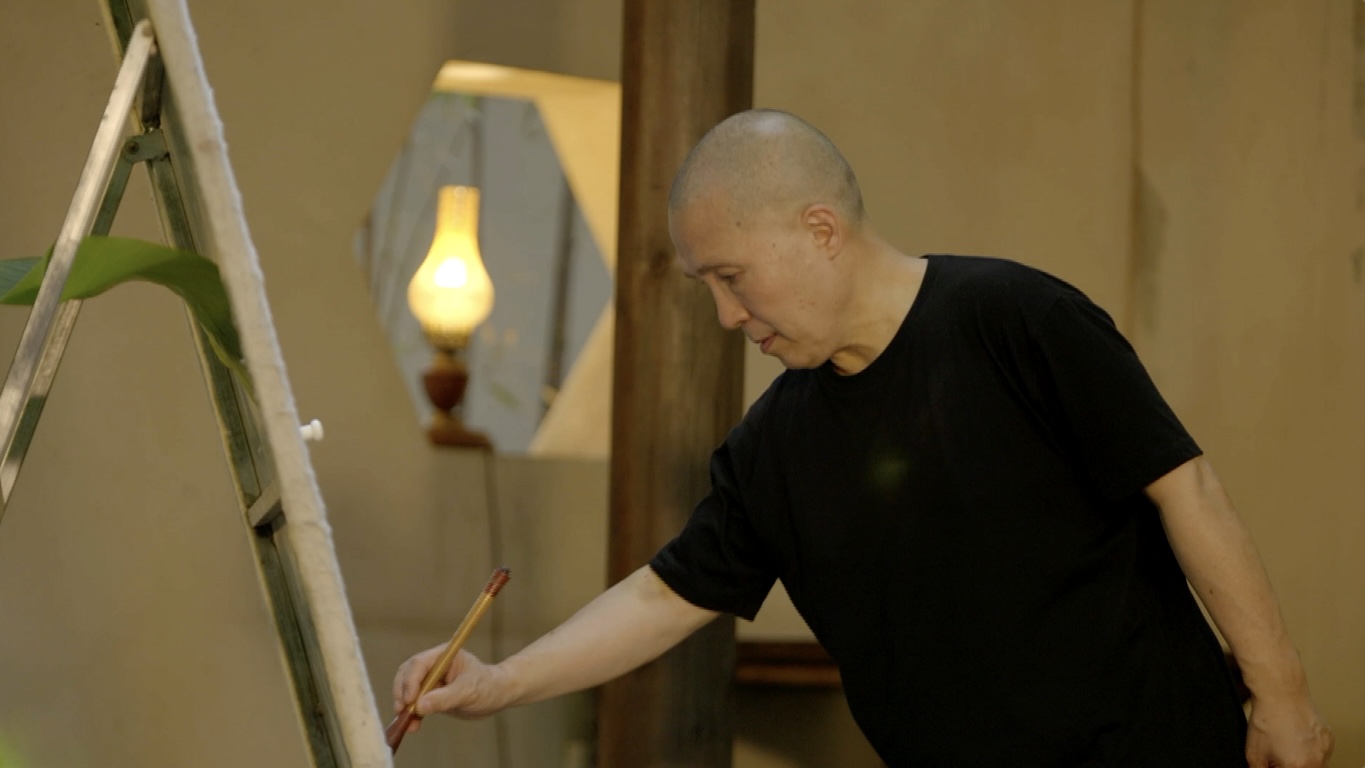
Zhou was born in 1959 in Nanjing, Jiangsu. During his childhood, painting was a way for him to while away the hours. As a first grader, Zhou flashed his artistic talent in a somewhat mischievous manner — he often drew on the school blackboard in class. Impressed by his art, however, Zhou's teacher chose not to punish him but rather let the young boy stand in as a substitute art teacher. Those whimsical chalk paintings marked the start of his burgeoning career as an artist.
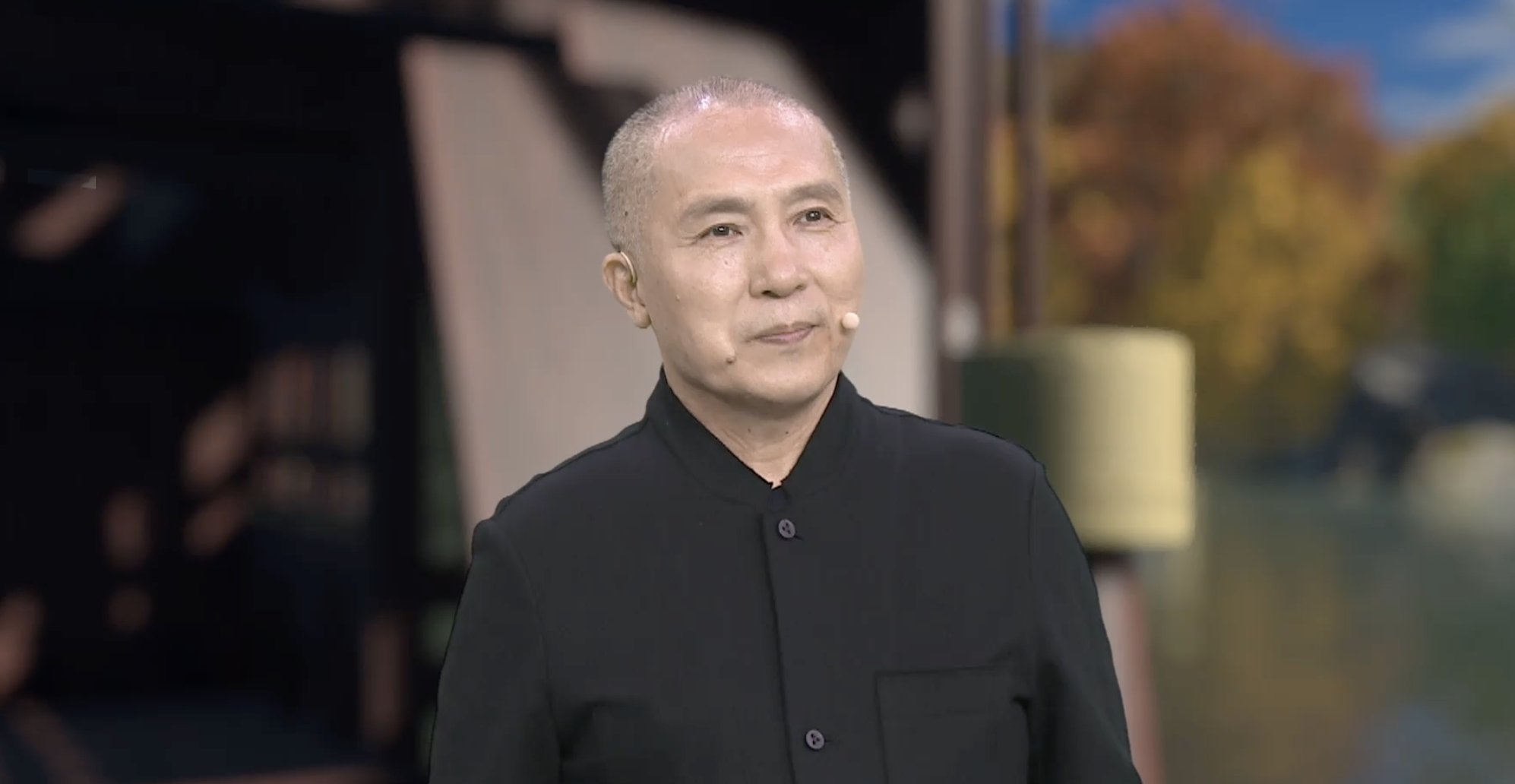
Chinese painter Zhou Jingxin. /CGTN
Chinese painter Zhou Jingxin. /CGTN
In 1980, Zhou entered Nanjing University of the Arts, where he benefited from the instruction of several famous teachers. He plunged himself into the world of ink wash paintings and fine brushwork paintings. His graduation project, "Water Margin Painting Series," now collected in the National Art Museum of China, is still considered a masterpiece of figure painting.
In order to perfect the painting, Zhou made a pilgrimage to Mount Liang in Shandong, where the story of the Chinese novel "Water Margin" is based. Zhou exaggerated each character in his paintings to mark his unique style. "Some have a crooked neck and a plump body. Especially for characters like Li Kui, their eyes are as round as bells," Zhou said by way of example.
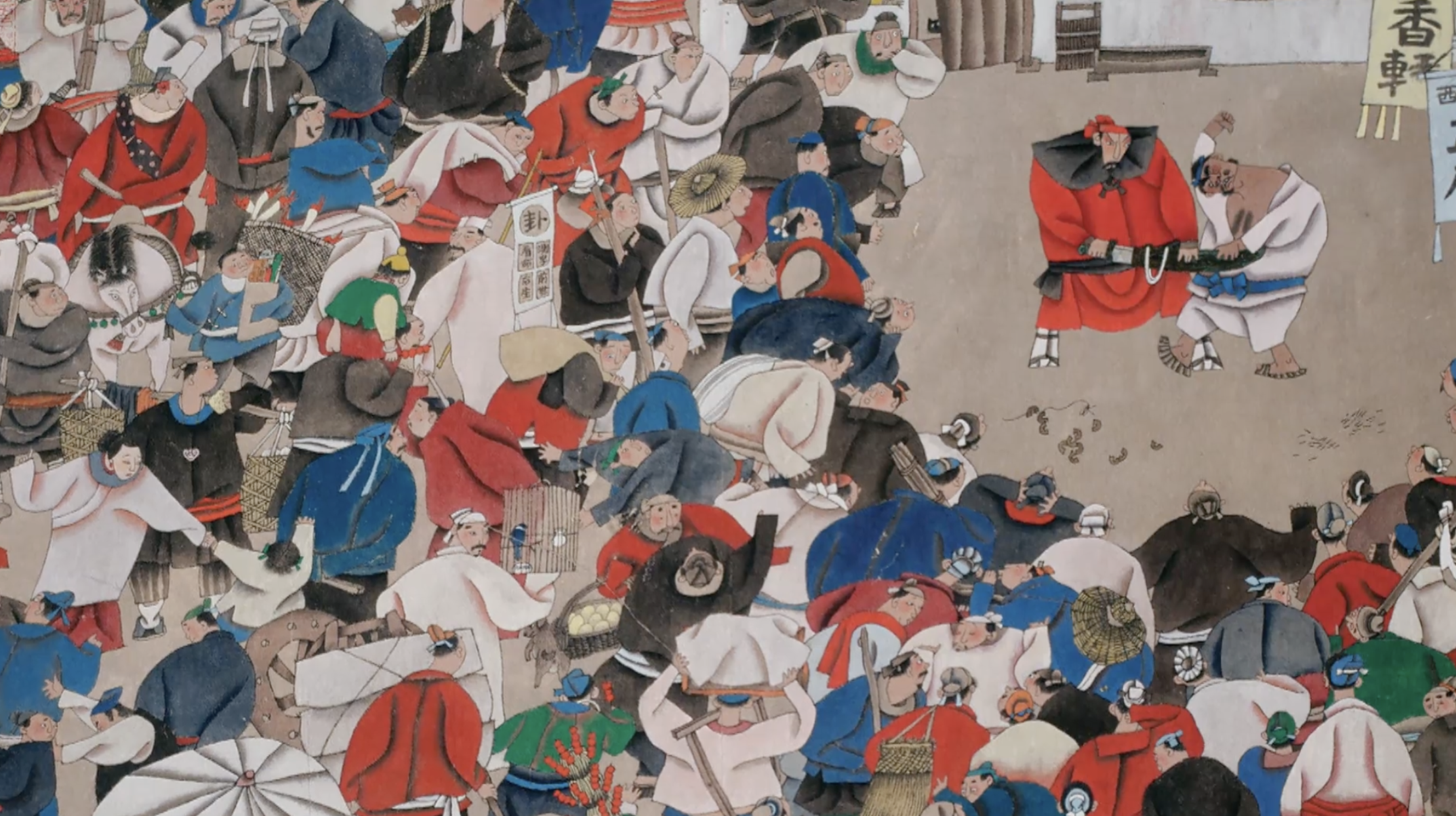
Details of the painting "Water Margin Painting Series" by Zhou Jingxin. /CGTN
Details of the painting "Water Margin Painting Series" by Zhou Jingxin. /CGTN
The "Water Margin Painting Series" employed meticulous brushwork and vibrant colors. In 1989, Zhou created the award-winning "Eight Eccentrics of Yangzhou" using light colors only. In addition to portraying traditional themes, he wanted to show the lives of contemporary people. An idea sprang to mind during his travels across China.
From the mid-1980s to the mid-1990s, he visited Xinjiang, Tibet, Yunnan and Guizhou in the interests of field work, always capping his travels with newly inspired artworks. Zhou recalled how he once took a trip to see the Dazu Rock Carvings in Chongqing and was especially fascinated by the unfinished pieces. "The clear-cut traces of stone carvings merged (well) with the semi-finished products. The strong contrast and vivid sculptures greatly inspired me," he said. Zhou's "ink sculpture" style was also formed at that time.
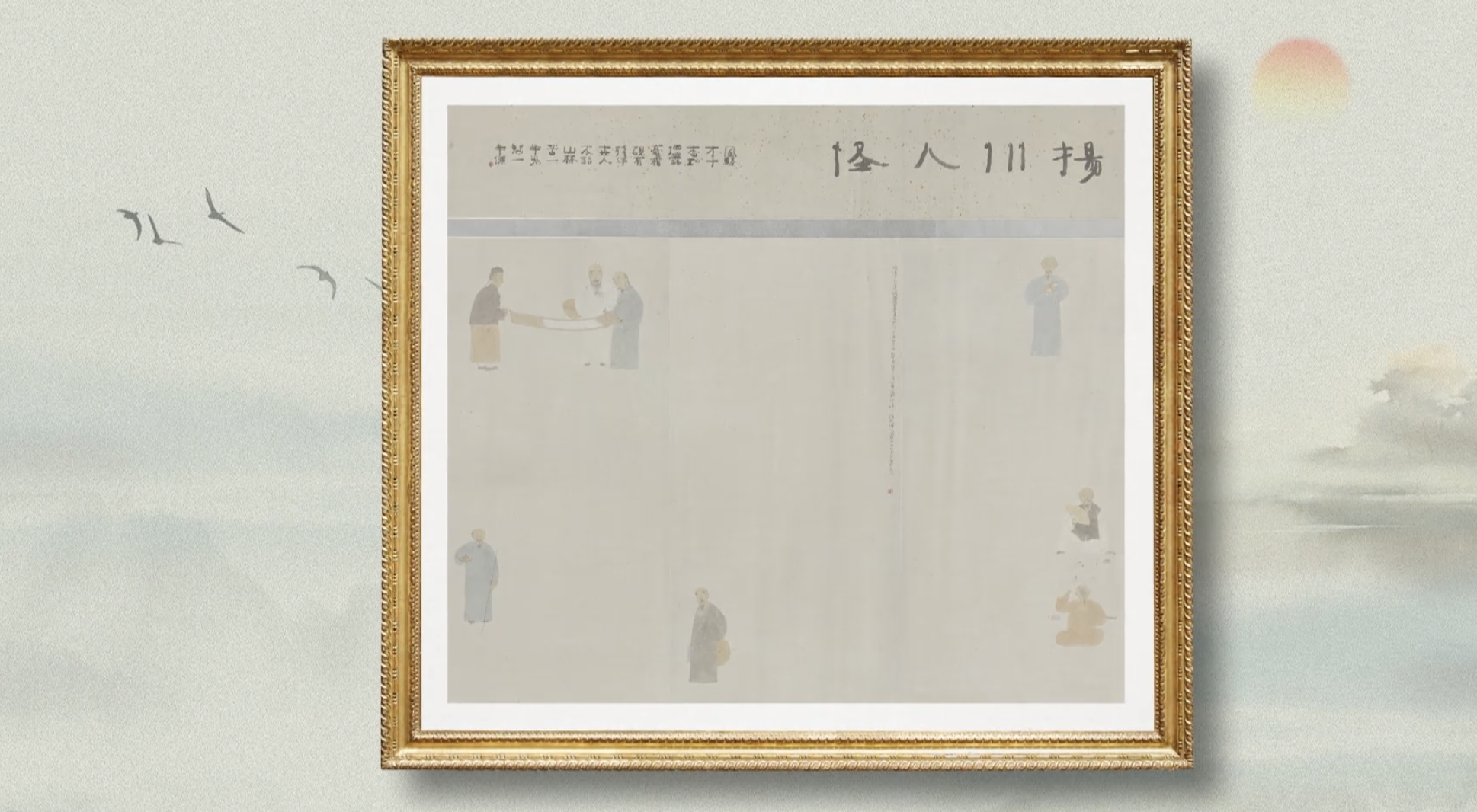
Zhou Jingxin's painting "Eight Eccentrics of Yangzhou." /CGTN
Zhou Jingxin's painting "Eight Eccentrics of Yangzhou." /CGTN
In 1995, he held a solo exhibition at the Jiangsu Art Museum. The subjects completely diverged from those seen in traditional Chinese ink wash paintings. Instead of flowers, birds, insects and landscapes, young people in leather jackets and jeans took center stage. Some found his ink paintings too subversive, even bearing traces of Western oil painting techniques, while others argued Zhou had endowed ink painting with an "extraordinary sense of sculpture." Merging these two artistic genres, he blazed a new trail of "ink sculpture" using broad strokes and big ink blocks to add a three-dimensional feel to the paper.
Three years later he finished a large painting more than three meters tall titled "Battling the Flood." With his "ink sculpture" modeling method, he showed the fearless soldiers using their bodies to block the raging torrent, effectively turning them into an iron bastion or towering monument.
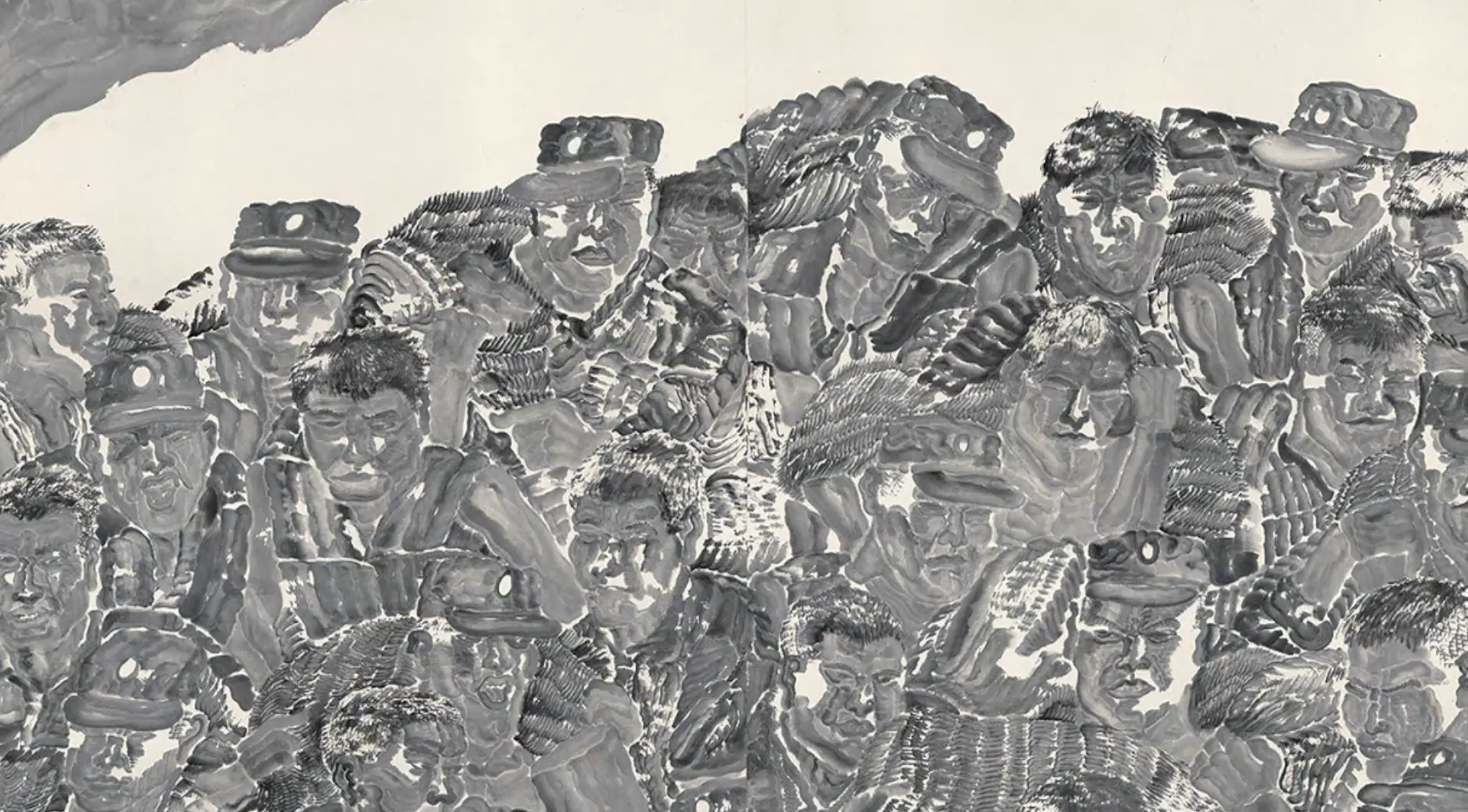
Details of "Battling the Flood" by Zhou Jingxin. /CGTN
Details of "Battling the Flood" by Zhou Jingxin. /CGTN
Zhou described traditional Chinese painting as a "Peach Blossom Spring," a fabled land of idyllic beauty. He believes its classical status among the development of Chinese civilization is due mainly to the infinite possibilities it offers in terms of artistic exploration. "The ink and brush in traditional Chinese painting are usually understood as being mainly based on lines, which is true. But lines aren't the be-all and end-all," Zhou said.
For Zhou, lines and planes in traditional Chinese painting can interact with and complement one another. There's no clear boundary between them. His "ink sculpture" style marks a form of experimentation with this classical geometry, and he has been creating his own artistic Arcadia throughout his career.